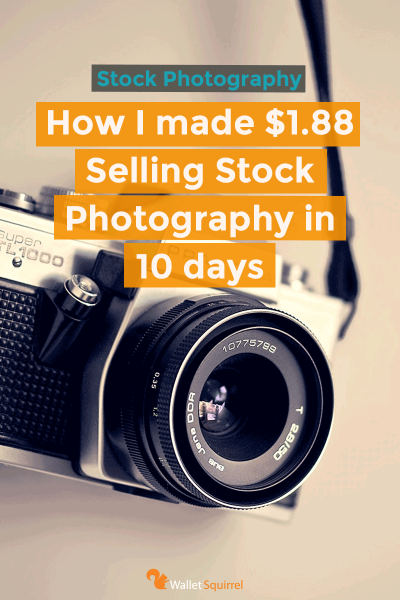If you’re a photographer, graphic designer, or digital artist looking to showcase your work and earn some income, Shutterstock might just be the platform for you. It’s one of the world’s leading stock image sites, boasting millions of images, videos, and music tracks. As a contributor, you get the opportunity to reach a global audience, build your portfolio, and generate passive income whenever your content is downloaded. Plus, Shutterstock provides a supportive community and valuable resources to help you improve and succeed. Whether you’re just starting out or already experienced, understanding how
Understanding the Shutterstock Contributor Platform

Getting familiar with the Shutterstock contributor platform is essential to maximize your exposure and sales. Once you sign up, you’ll gain access to an intuitive dashboard that lets you upload, manage, and track your content. Here’s a quick rundown of what you need to know:
- Uploading Content: You can upload images, videos, and vectors directly from your computer. Make sure your files meet Shutterstock’s quality standards—clear, well-lit, and high-resolution images tend to perform best.
- Keywords and Metadata: Adding relevant keywords and accurate descriptions is crucial. Think about what potential buyers might search for; use a mix of broad and specific terms to improve discoverability.
- Review Process: Submitted content goes through a review process to ensure it meets quality and legal standards. This typically takes a short time, but it’s good to be patient and wait for approval before promoting your work elsewhere.
- Sales and Earnings: Once approved, your content is available for licensing. Shutterstock operates on a royalty-based system, meaning you earn a percentage each time your content is downloaded. Keep an eye on your dashboard to see which images are popular!
- Community and Resources: The platform offers forums, tutorials, and tips to help you improve your submissions and increase visibility. Engaging with the community can also provide valuable feedback and inspiration.
Understanding these core features will help you navigate the platform more confidently, set realistic expectations, and develop strategies to enhance your exposure. Remember, consistency and quality are key—regularly uploading fresh, high-quality content and optimizing your keywords can significantly boost your visibility over time.
Tips for Optimizing Your Portfolio for Greater Visibility
So, you’ve got some great images ready to go on Shutterstock—awesome! But here’s the thing: just uploading your work isn’t enough. To really stand out and get noticed by buyers, you need to optimize your portfolio. Think of it as setting up a storefront that attracts people walking by. The better your storefront looks, the more foot traffic you’ll get.
First off, make sure your portfolio is organized and easy to browse. Use clear categories or collections so visitors can quickly find what interests them. For example, if you specialize in travel photography, create a dedicated collection for travel shots. This not only makes your portfolio more user-friendly but also signals to Shutterstock that you’re focused and dedicated to specific niches.
Next, pay attention to your keywords and titles. These are crucial because they help your images appear in search results. Use relevant, specific keywords that accurately describe your photos. Instead of just “flower,” try “vibrant sunflower field” or “delicate cherry blossom bloom.” Think about what a buyer might search for when looking for images like yours.
Also, don’t forget to update your portfolio regularly. Adding new work keeps your profile fresh and signals activity to Shutterstock’s algorithms. Plus, it shows potential clients that you’re active and committed. If you’re working on a new project or exploring a different style, showcase it—diversity can attract a broader audience.
Another tip is to engage with the community. Comment on other contributors’ work, participate in forums, and follow creators whose style you admire. While this doesn’t directly boost your visibility, building relationships within the community can lead to collaborations, feedback, and increased exposure through shared networks.
Finally, analyze your portfolio’s performance. Shutterstock provides stats on views and downloads. Use this data to understand what’s working and what’s not. If certain images get lots of attention, consider creating similar content. If others aren’t getting noticed, tweak your keywords, titles, or presentation. Continuous refinement is key to gaining greater visibility over time.
Creating High-Quality and Marketable Content
Let’s be real—no matter how well optimized your portfolio is, if your images aren’t high-quality and marketable, you won’t get the traction you’re aiming for. The good news? Creating top-notch, market-ready content is totally within your reach with a few simple guidelines.
First, focus on technical excellence. This means sharp focus, good lighting, and proper exposure. Blurry or poorly lit images tend to get rejected or ignored. Use a good camera if you can, but even smartphones today can produce excellent results if used thoughtfully. Always review your shots before uploading to ensure they meet Shutterstock’s quality standards.
Next, pay attention to composition. Follow classic principles like the rule of thirds, leading lines, and balanced framing. Think about what makes an image visually appealing and easy to understand at a glance. Remember, buyers often need versatile images that can fit into various projects, so clarity and simplicity can be powerful.
Marketability is all about what’s in demand. Keep an eye on current trends—whether it’s remote work themes, eco-conscious living, or diverse representation. Use your research to create images that resonate with what buyers are actively searching for. For example, lifestyle shots showing people using tech gadgets or diverse workplace scenes are often popular.
Authenticity matters too. Candid, genuine moments tend to connect better with audiences and stand out from overly staged or generic images. If you’re photographing people, ensure you have model releases, and always aim for natural expressions and interactions.
Finally, consider post-processing. A little editing can go a long way to enhance your images. Adjust brightness, contrast, and color balance to make your photos pop. But avoid over-editing—your images should look natural and professional, not overly manipulated.
Remember, marketable content is about understanding what buyers need and delivering it with quality. Keep honing your skills, stay inspired by current trends, and always aim for the highest standards. That’s how you’ll build a portfolio that not only gets noticed but also sells!
Using Relevant Keywords and Tags to Improve Searchability
Alright, let’s talk about one of the simplest yet most impactful ways to get your images noticed on Shutterstock — using the right keywords and tags. Think of keywords as the clues that help users find your work when they’re searching for specific images. If your keywords are spot-on, your images are much more likely to appear in relevant search results, which means more views and potential downloads.
Why are keywords so important? Because Shutterstock’s search algorithm relies heavily on tags and keywords to match user queries with your images. No matter how stunning your photo is, if you don’t include the right keywords, it might get lost in the shuffle.
Here are some tips to master keywording:
- Be specific: Use detailed descriptions. Instead of just “dog,” try “Golden Retriever puppy playing in the park.” The more specific, the better.
- Use relevant synonyms: Think about different words people might use. For example, “car” and “automobile,” or “beach” and “seaside.”
- Include location if relevant: If your photo is of a famous landmark, mention it! Like “Eiffel Tower in Paris” or “Santorini sunset.”
- Avoid overstuffing: Use a balanced number of tags — usually around 10-15 relevant keywords. Too many unrelated tags can hurt your searchability.
Additionally, consider using the Shutterstock keywording tool or researching trending keywords within your niche. Look at similar popular images and see what tags they use. This can give you inspiration and help you stay current.
Remember, well-chosen keywords don’t just help your images get found—they attract the right audience. So invest some time into keywording properly, and you’ll see your exposure grow over time.
Engaging with the Shutterstock Community and Promoting Your Work
Next up — don’t just upload your images and hope for the best. Engaging with the Shutterstock community and actively promoting your work can make a huge difference in boosting your visibility. Think of it as building your own little network of supporters, collaborators, and fans who can help spread the word about your art.
Here’s how you can get involved:
- Participate in forums and groups: Shutterstock has community forums where contributors share tips, ask questions, and celebrate each other’s success. Jump in, offer helpful advice, and build relationships.
- Share your work on social media: Platforms like Instagram, Twitter, and Facebook are perfect for showcasing your images. Use relevant hashtags, tag Shutterstock, and engage with followers.
- Collaborate with other contributors: Partnering on projects or sharing feedback can open doors to new opportunities and increase exposure for both parties.
- Feature your best work on personal blogs or websites: Create a portfolio site where you can tell stories behind your images, discuss your creative process, and link back to your Shutterstock portfolio.
Another smart move is to participate in Shutterstock’s promotional campaigns or contests. These events often spotlight top contributors and can give your work extra visibility. Plus, they’re a fun way to challenge yourself and improve your skills.
Remember, building a presence isn’t just about numbers — it’s about creating authentic connections. When people see your passion, expertise, and willingness to engage, they’re more likely to check out your portfolio and share your work with others. So be proactive, stay consistent, and enjoy the journey of growing your presence within the Shutterstock community!
Leveraging Social Media to Drive Traffic to Your Portfolio
In today’s digital world, social media is a powerful tool for photographers and artists looking to get more eyes on their Shutterstock portfolio. It’s not just about sharing your work; it’s about creating a consistent presence that encourages followers to explore your portfolio and, hopefully, license your images. So, how do you make social media work for you?
Start by choosing the right platforms. Think about where your target audience hangs out. Instagram and Pinterest are visual-centric platforms that work beautifully for photographers. Facebook groups and pages can also be valuable, especially if you join communities related to your niche.
Show behind-the-scenes content. People love seeing the process. Share snapshots of your shoots, editing workflows, or even your creative space. This personal touch builds a connection and makes followers more inclined to check out your full portfolio.
Use compelling captions and hashtags. Craft captions that tell a story about each image or share interesting facts. Incorporate relevant hashtags like StockPhotography, ShutterstockContributor, or niche-specific tags to increase discoverability. Don’t forget to include a call-to-action, such as “Check out my full portfolio on Shutterstock!”
Consistent posting schedule helps keep your audience engaged. Whether it’s once a day or a few times a week, regular updates remind followers of your work and increase chances of sharing your images.
| Social Media Platform | Best Practices |
|---|---|
| Share high-quality images, use relevant hashtags, utilize Stories, and engage with followers through comments and DMs. | |
| Create themed boards, pin your images, and collaborate with other pinners to increase visibility. | |
| Join niche groups, post regularly, and consider creating a dedicated page for your photography work. |
Remember, social media is about building relationships. Engage authentically—reply to comments, thank followers for sharing, and participate in conversations. Over time, this will boost your profile and drive traffic to your Shutterstock portfolio.
Monitoring Your Performance and Adjusting Your Strategies
Gaining exposure is just the first step. To truly succeed as a Shutterstock contributor, you need to keep an eye on how your efforts are paying off. Monitoring your performance helps you understand what’s working and what’s not, so you can fine-tune your approach for better results.
Start by reviewing your Shutterstock dashboard. It provides valuable insights like your top-performing images, downloads, and earnings. Pay attention to trends—are certain types of images getting more downloads? Are your keywords bringing in more traffic?
Next, leverage analytics from your social media platforms. Most offer built-in tools to see engagement rates, reach, and follower growth. For example, Instagram Insights can tell you which posts resonate most with your audience, so you can create similar content.
Consider keeping a simple spreadsheet or journal to track:
- Image performance: Which images are getting the most downloads?
- Keyword effectiveness: Are your tags helping users find your images?
- Social media engagement: Which posts drive traffic or new followers?
- Overall earnings: Are your sales increasing over time?
Based on this data, don’t hesitate to adjust your strategies:
- Optimize your keywords: Add relevant keywords for images that aren’t performing well.
- Refine your portfolio: Focus more on your best-selling themes or styles.
- Experiment with new content types or topics: If certain subjects attract more attention, create more images in that niche.
- Improve your social media approach: Post more of what works, and try new formats like reels or stories to boost engagement.
Remember, success doesn’t happen overnight. Regularly reviewing your performance allows you to adapt and grow steadily. Keep experimenting, stay consistent, and you’ll see your exposure—and your earnings—rise over time.
Conclusion and Final Tips for Success as a Shutterstock Contributor
Achieving success on Shutterstock as a contributor requires dedication, strategic planning, and continuous improvement. By consistently submitting high-quality, unique images that meet the platform’s standards, you can increase your chances of gaining exposure and sales. Remember, building a strong portfolio takes time, so patience and perseverance are key.
Here are some final tips to help you succeed:
- Research Trends: Stay updated on current visual trends and incorporate them into your work to attract more buyers.
- Optimize Your Keywords: Use relevant, specific keywords to improve the discoverability of your images.
- Engage with the Community: Participate in forums and contests to increase your visibility and learn from other contributors.
- Maintain Consistency: Regularly upload new content to keep your portfolio fresh and appealing to the platform’s algorithms.
- Review Your Analytics: Use Shutterstock’s analytics tools to understand what types of images perform best and tailor your future submissions accordingly.
In summary, success as a Shutterstock contributor hinges on quality, relevance, and persistence. Keep honing your skills, stay informed about market demands, and actively engage with the platform’s community to maximize your exposure and income potential. With dedication and strategic effort, you can establish a thriving presence on Shutterstock and turn your passion for photography or design into a rewarding career.


